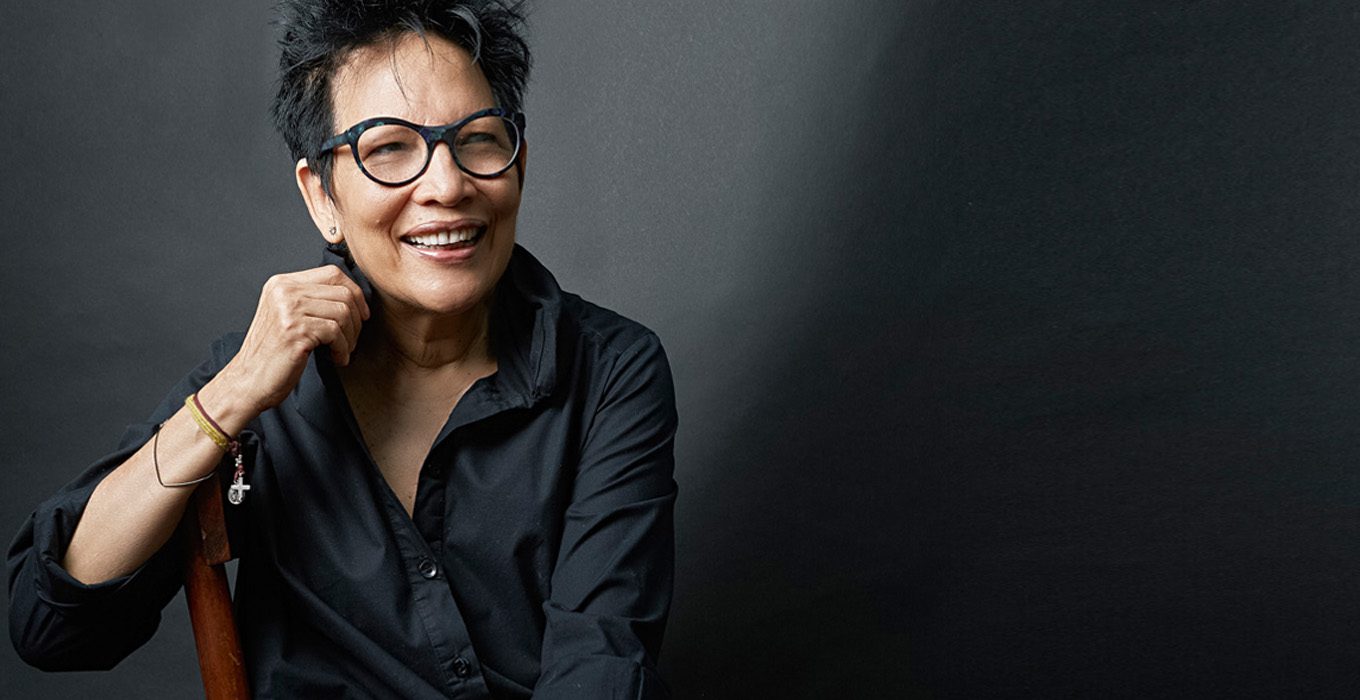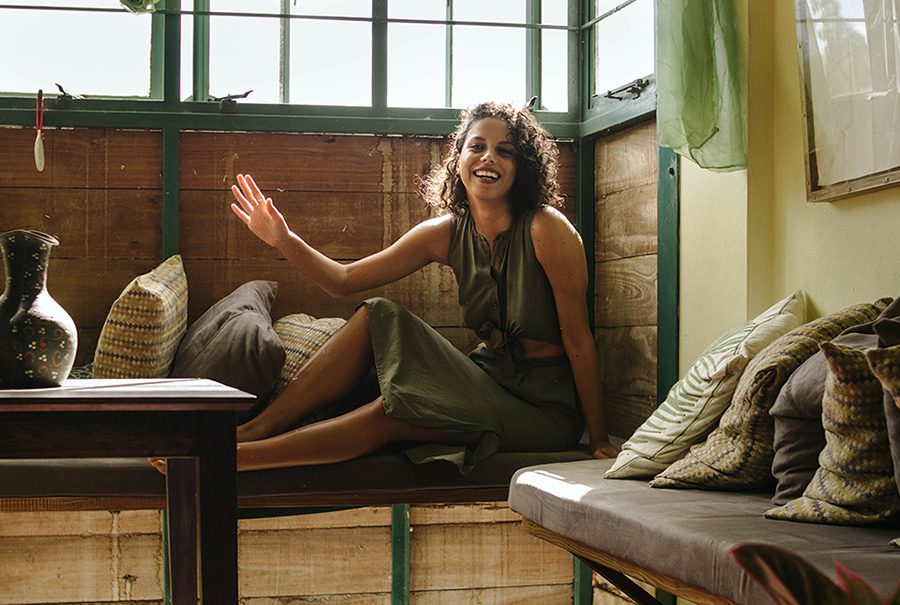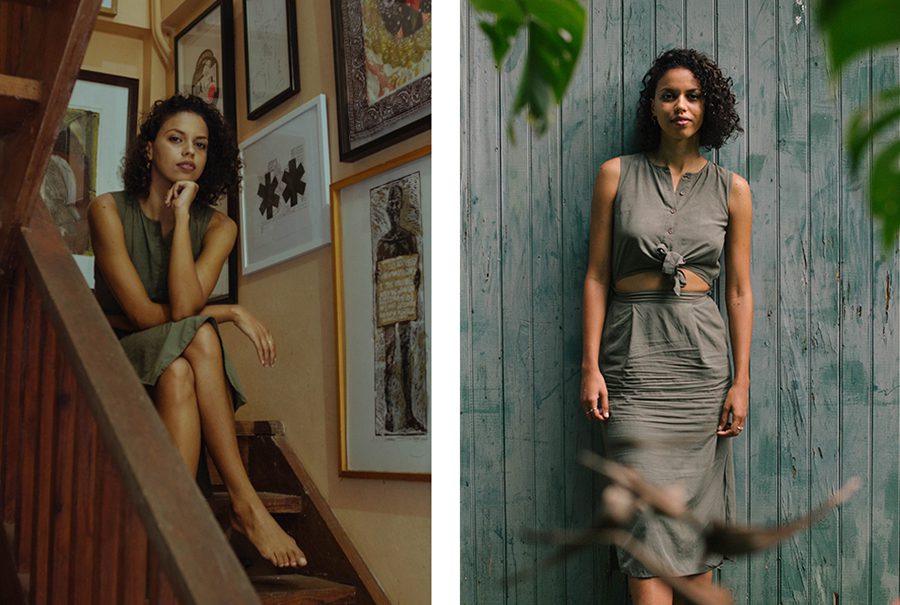

April 02, 2018
The homes of artists are always so inspiring. So much to look at: paintings on the walls, drawings stuck in corners, intriguing books, movies and conversations all around you. Now imagine being the child that lives here.
Filmmaker Maya Cozier is the daughter of Trinidadian contemporary visual artist Christopher Cozierand painter Irénée Shaw and the winner of the 2017 Trinidad & Tobago Film Festival Short Film Prize for her film ‘Short Drop’ – a film that follows an older Trinidad man who leaves his house and accidentally gets taken for a taxi driver. Maya is also the director of Nailah Blackman’s ‘Sokah’ music video and the upcoming Freetown video for ‘Human Form’. But when we asked Maya if she’d describe herself as a filmmaker, she says she’s an artist whose medium happens to be film.
We met with Maya in the living room of her parent’s house early on a Saturday morning to chat about the importance of portraying Trinidad authentically and the types of stories she’s most inspired to create and why.
So where did you go to school?
MAYA: I started at St. Roses Girls RC, then Holy Name Convent and, finally, the School of Visual Arts (SVA) in New York.
Your mom’s an art teacher at Holy Name, isn’t she? Did she teach you while you were there?
MAYA: Yes, but I had different art teachers most of the time. The other art teachers tried their best to step in so there wouldn’t be the issue of bias with mom. She really only taught me in Upper 6 and Upper 6 Art is like a very close family so we were all close to mom in the same way.
Both of your parents are artists. How come you didn’t get into painting and visual arts yourself?
MAYA: I actually had a hard time deciding. I applied to a couple of art schools and actually enrolled in Parsons to do Fine Arts but then I spent six months at home waiting to see if I could get the Visual Arts Open Scholarship. So I had a lot of time to figure out which medium I wanted to get into.
During that time, I found that I was really fascinated with moving images and started making videos so I switched focus and signed up for the Film Programme at SVA.
Do you have any regrets about the switch?
MAYA: No, I don’t regret the switch at all because SVA had a very flexible programme. Even though my major was film, I took classes in painting, photography, black and white photography: I did a bit of everything.
“One of the things I noticed while I was there was that a lot of filmmakers came from different backgrounds, bringing together many different strengths.”
So in a sense, I think I identify more with being an artist than being a filmmaker. Film is the medium I’m interested in right now, but I wouldn’t want to limit myself to it.
Considering that you identify as an artist, do you remember why or when you chose film as your medium?
MAYA: It kind of evolved. It started off with a strong interest in fine arts, then some curiosity about what I could do with video and moving images. At school, I was obviously able to explore much more and I was exposed to the medium in a new and different light: learning the formal structures of storytelling, cinematography and editing. From there, it kept growing.
I look at film almost every day and I’ve just become more invested in the medium.
Is it the dialogue? What is it about film that appeals to you?
“I think it’s the personal stories. Humanist stories. Stories that explore what it means to be alive and live those everyday experiences.”
I love watching work from filmmakers from all over the world… Rainer Fassbinder, Jim Jarmusch, David Lynch, Pedro Almodovar. The films ‘Night on Earth’ and ‘Taste of Cherry’ were very influential films for my thesis.
One of your first films was about a dancer who was your friend…
MAYA: Yes, my friend Shan, who the film was named after. That’s the first film I went public with and it got in to the Trinidad & Tobago Film Festival in 2013. Shan really liked it and it’s always rewarding to do a piece on someone and have them like it.
That was actually the second film I ever made. I made my first film in freshman year: it was a black and white piece about a woman living on Flatbush Avenue who had a bunch of grandchildren in her care. I kind of look at it and laugh now.
And you won Best Short Film at the 2017 Trinidad & Tobago Film Festival for your film ‘Short Drop.’ Was that a surprise to you?
MAYA: Yes, it was! This was actually my thesis film. And even though I wrote it with a Trinidadian audience in mind, it first showed at SVA and in Miami and then in other places. So I was very nervous to see what the reception and response would be at home.
I really, really wanted to stay true to making it about Trinidad and for Trinidadians. And when the time came, it was very, very nerve-wracking to show it to a Trini crowd. But people were very receptive and the responses were overwhelmingly good.
So I got to see your film a little earlier than your film festival release. After it showed, I spoke to your dad and he said something about recalling conversations in the house that seem to feature in your film. What do you think he meant by that?
MAYA: Well, yeah, it is true. I feel like some of the best stories on film are personal stories. Like when someone struggles with their sexuality or identity for a long time: they make a film about it and you can tell when it comes from an authentic place – it feels real. So I definitely wanted to make something that I had experienced or heard or was familiar with.
I feel like some of the best stories on film are personal stories.
I wouldn’t say that the characters are an exact replica of people I know but I know, when I was writing the script, I did kind of bring that to the characters. Even for Bartholomew (the main character in ‘Short Drop’). Some of the things he would have said I may have heard someone else say… My dad, maybe! And then I kind of flow from there.
That must get you in trouble sometimes?
MAYA: Yeah, it’s tricky. I had a roommate at one point and we spent the summer in New York. A lot was happening: I had just graduated and was just going out every night. So I had a lot of different stories and I just started writing. One night, I mentioned one of these stories to a film maker friend and said, “Oh, well I’m developing this…”
The next day my friend shouted to another friend, “Do you know that Maya is making a film about us?!?!?!?!”
So… is it more experience or imagination? Or both?
MAYA: It’s definitely a combination. I take notes and then reference them and then elaborate so it eventually does become fiction. Reality is informative but I try to make it into it’s own thing.
Can you take us through the process of making ‘Short Drop’?
MAYA: Well, first of all, it started with the script and a ‘small world’ story involving my thesis advisor.
This guy, who actually won a bunch of Academy Awards for classics like ‘The God Father,’ ‘Amadeus’ and ‘Hair,’ moved to Trinidad with his wife to do the ‘Sesame Street’ episode with the Moko Jumbies. They lived here for some years and, when he retired, he started teaching at SVA.
During one of my classes, he heard my accent and he asked, “Where are you from?” When he told me his story, I was like: there’s this Trini connection, I have to take his class!
So, in my junior year, I enrolled in his production class and that was the toughest experience ever. He doesn’t really get distracted by the visual element of a film so I could go all out and try to make something really cool and visually interesting and he’d just have no interest in it. Instead, he’d ask, “How does this scene work between these two people?”
He looks very specifically at the performance and how a scene holds up together when two people sit and have a conversation. So, after a whole year of struggling with that, he eventually began advising me through ‘Short Drop.’
When I think back, ‘Short Drop’ came out of a very specific desire I had. In my mind, I thought, “Ok, this is something that I want to get right. Hearing Trinidadians talk in a way that sounds natural and real. Feeling like their interactions are working and real.” That’s why I wanted to focus on people in a car interacting. It wasn’t very cinematic. It was just really about the interactions because I really wanted to get that right.
I wrote the first draft but it wasn’t working so well, so I stopped. I started reading a couple of books set in the Caribbean and then I went back to it and did another rewrite that worked much better.
So, now that I had the script, I had to figure out how to approach filming in a moving car. My advisor thought that there would be a lot of production challenges so he suggested green screen. My peers, however, totally disagreed!
You’re in the middle of Trinidad with those streets, that life, that energy! Just go for it! Shoot it in a moving car!
I did a quick flight home to cast and location scout.
I didn’t do a rigorous casting. I kind of used my instinct when it came to some people. For example with Kyle, the cross-dresser, we did a couple castings for that character but none of them worked. I remember meeting Kyle at a party and he came up to me with this huge smile and energy and I immediately thought I don’t need to audition him. I think he’s the person to play this part so I just called him up. I told him about the film and the part and asked if he would do it.
Albert, too… Albert was the character!
Also at the time, I didn’t really know very many people in the film industry here so I had to use crewmembers who went to school with me.
Was that their first trip to Trinidad?
MAYA: Yup, they were all excited! The script had won a grant from school, so I was able to pay to bring them down but as my thesis advisor predicted, a lot went wrong!
We decided we wanted to be on Charlotte Street with car and actors… and, logistically, it was just a mess. So, things kept going wrong every single day.
My core crew (Lighting, Camera, Sound and Assistant Camera) was totally game to just be in that environment, so they stuck it through with me to the end. But then I had two other crewmembers that were overwhelmed by everything and it was just too much.
Plus, we’re in the Caribbean: we had to rough it a little and roll with actors who just decide a morning that they don’t want to answer their phones. What can you do?
So, everyone’s there waiting on the top of a hill in Paramin and we can’t get onto this actor or they’re not used to the idea that we’re up in Paramin. There’s no table there waiting with coffee up in the mountains. And no power. It’s a student budget so it’s a little bit rougher and you have to understand that you have to adapt.
Some people totally got that and they were game and thrilled to be there. For others, it was bit of a challenge.
What were some of the other challenges?
MAYA: One day the car broke down cause it was so old. We had to light the interior of the car using a car battery because a generator would make too much noise but then the car battery only had a certain amount of life before you had to take it to charge again… One actor’s wallet got stolen a day so we had to stop shooting and postpone to another day. And I probably just pissed off a lot of people in the process as well!
I can’t imagine managing all of that and not pissing off one or two people in the process. But it doesn’t show in the end result!
MAYA: Ha! At the end when I flew back up for my final semester and the editor started looking through the footage he was like, “Wait a minute, they’re acting? It’s so natural!”
I’m sure it could have been better if we had more resources, more budget, more time but with what I was working with, I was really happy with the end result!
So what’s next for you?
MAYA: Now that I’m home I actually do want to make another film. Now that I understand the lay of the land and how things work, I feel like I’m more prepared for the whole thing.
I started shooting another short in February but my plan is to turn this short into a feature length film. I’m very committed to the idea behind the short but I’m open to it evolving into something else once it progresses.
And I’m co-writing it with Melina Brown. She lives in New York but has Jamaican parents so she’s also very passionate about making work in the Caribbean.
We wrote the first draft of a feature length script and from that we developed a ten page short called ‘She Paradise.’ It’s about a young girl who stumbles upon a free-spirited girl gang, leading to alluring but unsettling encounters with nightlife and money. It’s a little personal and close to me but it’s definitely about exploring girlhood in Trinidad and getting into what that means. It’s a sort of coming of age story. And, I could be wrong, but I feel like it’s something that hasn’t been explored in film here… yet!
Find Maya Cozier: on Vimeo


INTERVIEWER: TANYA MARIE PHOTOGRAPHER: JLH PERSPECTIVES